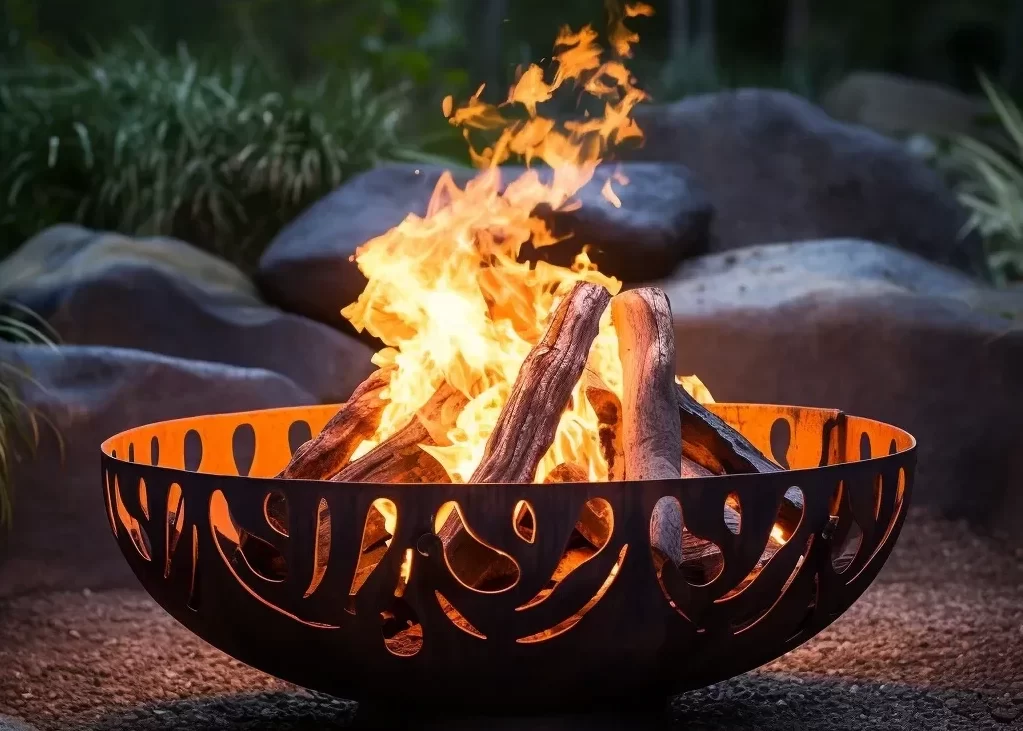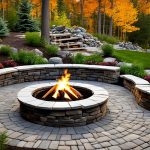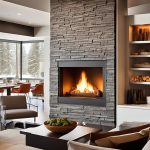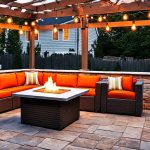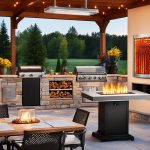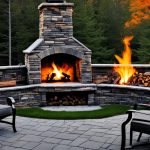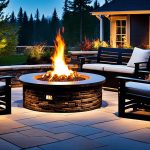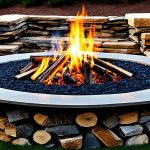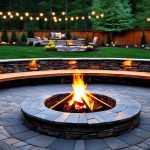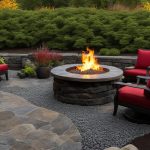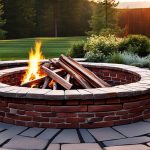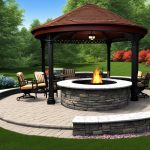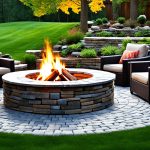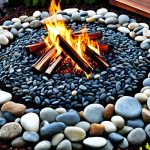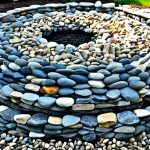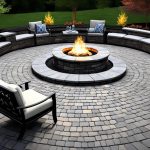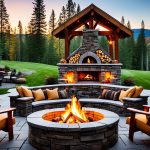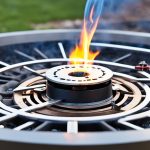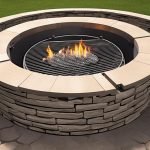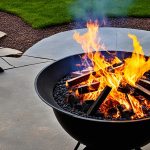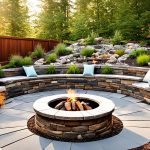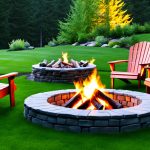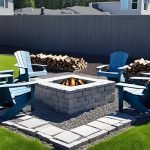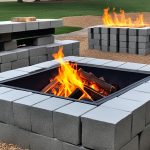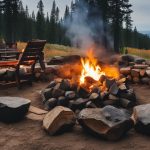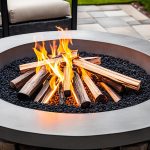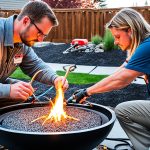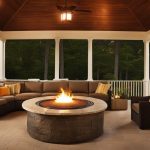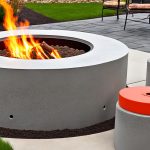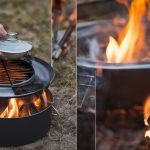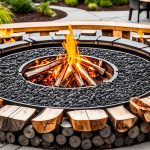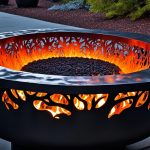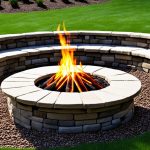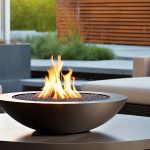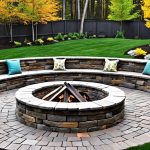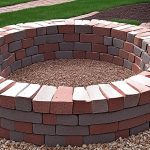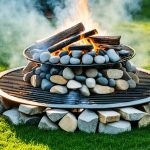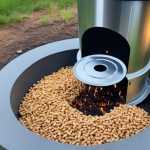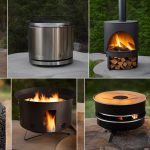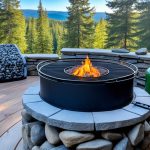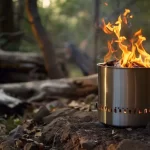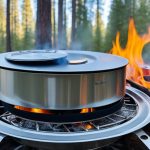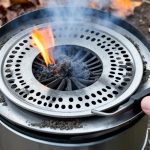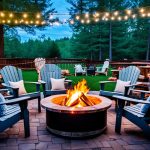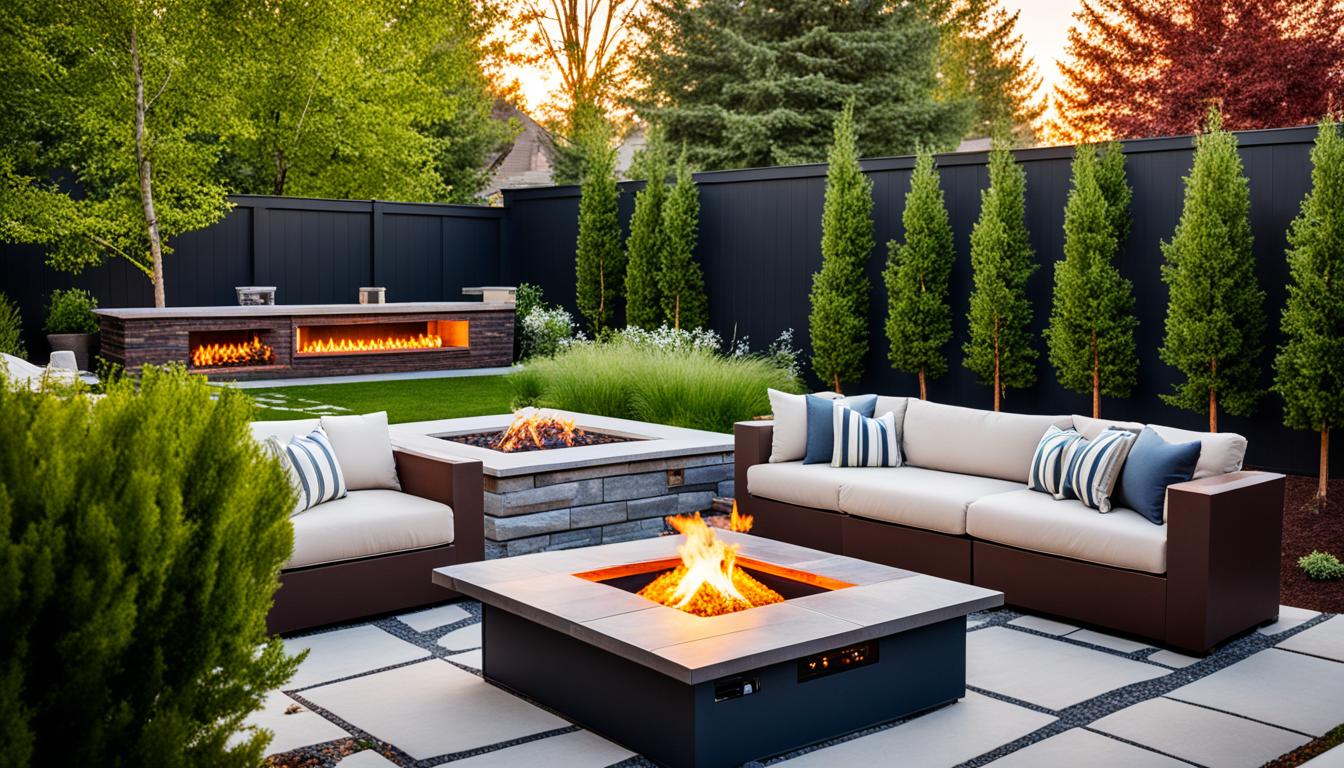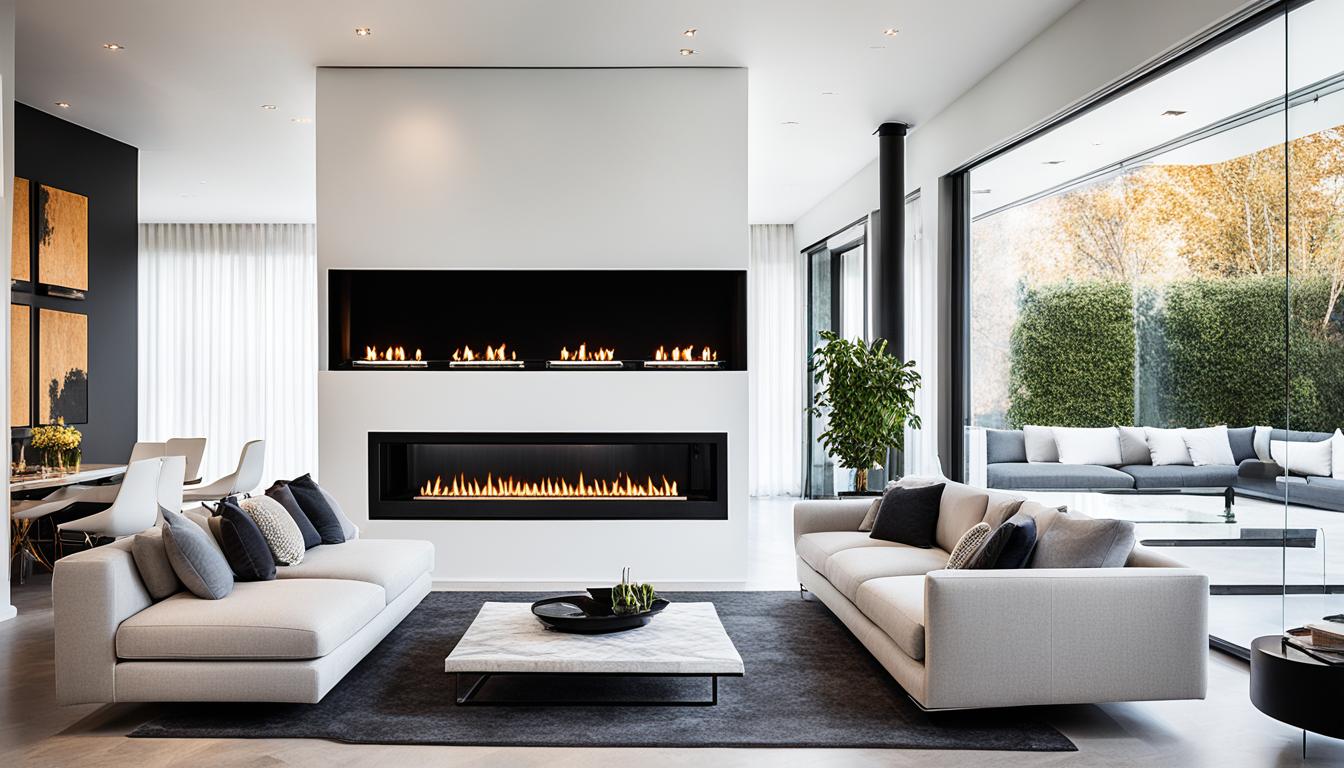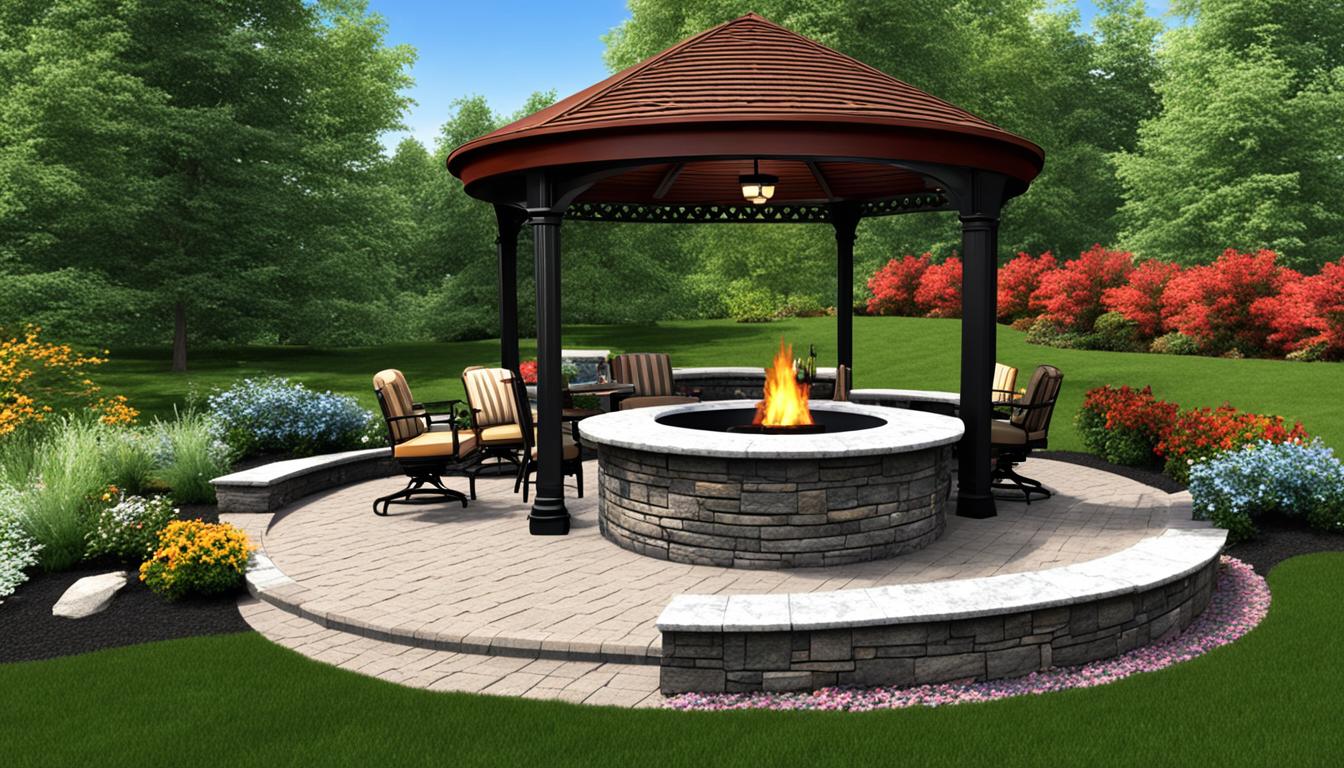Imagine the warm glow of flickering flames, the crackling sound of a fire, and the cozy ambiance that draws everyone together. There’s something undeniably magical about gathering around a fire pit. It creates a sense of togetherness, a space where memories are made and stories are shared.
Building your own gas fire pit allows you to bring this enchanting experience right to your backyard. Whether you’re a seasoned DIY enthusiast or just starting out, this guide will walk you through the process of creating a stunning gas fire pit that will become the heart of your outdoor oasis.
Key Takeaways:
- Learn how to build a gas fire pit from scratch
- Discover design tips and safety guidelines for a successful project
- Choose the perfect location and gather the necessary materials
- Follow a step-by-step installation process with expert guidance
- Maintain and care for your gas fire pit to ensure longevity
Gas Fire Pit Design Tips
Before you begin building your gas fire pit, it’s important to have a solid design plan in place. A well-designed gas fire pit can enhance the ambiance of your outdoor space and create a cozy gathering spot for family and friends. Here are some essential tips to consider:
1. Explore Various Design Options
There are numerous design options available for gas fire pits. You can choose from traditional fire pit designs or opt for more modern and sleek designs. Consider the overall style and aesthetics of your outdoor space to select a design that complements your existing decor.
2. Select the Right Materials
The choice of materials for your gas fire pit is crucial for durability and aesthetic appeal. Common materials used for gas fire pits include concrete, stone, metal, and brick. Each material has its unique characteristics, so choose one that suits your style and preferences.
3. Plan the Construction Process
Having a well-thought-out construction plan will ensure a smooth assembly process. Determine the size and shape of your gas fire pit, and consider factors such as seating arrangements and safety clearances. Sketch a detailed plan or use online tools to visualize the construction process.
“The right design and materials can transform a simple gas fire pit into a stunning focal point in your backyard.” – Expert Fire Pit Designer
4. Consider Safety Measures
Safety should always be a top priority when designing a gas fire pit. Ensure proper ventilation to prevent the buildup of gas. Take into account local regulations and guidelines for constructing gas fire pits. Install a gas shut-off valve and fire extinguisher nearby for added safety.
5. Create a Focal Point
A gas fire pit can be more than just a functional element; it can also serve as a striking focal point in your outdoor space. Consider incorporating unique design elements such as fire glass, lava rocks, or decorative tiles to add visual interest and create a captivating centerpiece.
By following these design tips, you can create a gas fire pit that not only provides warmth and comfort but also adds style and personality to your outdoor oasis.
Gas Fire Pit Safety
Safety should be a top priority when building and using a gas fire pit. By following these important safety measures, including proper ventilation, gas line installation, and regular maintenance, you can enjoy your gas fire pit with peace of mind.
Proper Ventilation
Ensuring proper ventilation is crucial when it comes to gas fire pit safety. Adequate ventilation helps prevent the buildup of harmful gases, such as carbon monoxide, and ensures a steady supply of oxygen. To promote good ventilation:
- Choose an outdoor location for your gas fire pit that is well-ventilated, away from any enclosed spaces or structures.
- Avoid placing your fire pit in low-lying areas where gases may accumulate.
- Consider adding a vent or chimney to guide smoke and gases away from the fire pit area.
Gas Line Installation
Proper installation of the gas line is essential for the safe operation of your gas fire pit. Follow these guidelines:
- Consult a professional plumber or gas technician to handle the gas line installation.
- Ensure that the gas line and connections are leak-free by performing pressure tests.
- Keep the gas line away from heat sources, flames, or other flammable materials.
Regular Maintenance
Maintaining your gas fire pit regularly is key to preventing accidents and ensuring its longevity. Here are some maintenance tips:
“Regularly inspect the gas lines for any signs of damage or wear, such as cracks or corrosion.”
- Clean the burner and remove any debris or blockages that may affect the flame’s quality.
- Check and tighten all connections, including the gas supply line, valves, and fittings.
- Keep the surrounding area free from flammable materials and clutter.
Following these safety guidelines will help you create a safe and enjoyable environment around your gas fire pit. Remember to prioritize safety and take the necessary precautions to protect yourself and your loved ones.
Choosing the Right Location
The location of your gas fire pit plays a crucial role in creating an inviting and functional outdoor space. When choosing the perfect spot, consider several factors to ensure optimal enjoyment. By strategically placing your gas fire pit, you can transform your backyard into a cozy oasis.
Proximity to Your Home
One of the first considerations is the proximity of your gas fire pit to your home. You want it to be conveniently located, allowing easy access for you and your guests. A gas fire pit closer to your home can also provide additional warmth and create a seamless flow between indoor and outdoor entertaining areas.
Wind Conditions
Take into account the wind conditions in your area when selecting the location for your gas fire pit. Position it in an area sheltered from strong winds to prevent the flames from being easily extinguished. Additionally, consider nearby trees or structures that may obstruct the natural airflow and potentially cause fire hazards.
Local Regulations
Before installing your gas fire pit, familiarize yourself with any local regulations or guidelines regarding its placement. Some areas may have restrictions on the proximity of fire features to buildings or property lines. Complying with these regulations ensures a safe and legal installation that won’t disrupt your enjoyment of the fire pit.
“The right location for a gas fire pit will enhance the overall ambiance and functionality of your outdoor space.” – Outdoor Living Magazine
By carefully considering these factors, you can choose the perfect location for your gas fire pit. The next section will focus on gathering the necessary materials to bring your fire pit project to life.
Gathering the Necessary Materials
Building a gas fire pit requires specific materials. To ensure a successful project, you’ll need the following essential components:
Burner
Choose a suitable burner for your gas fire pit, considering factors such as size, BTU rating, and compatibility with your gas supply system. The burner is responsible for distributing the gas and creating the flames.
Gas Supply System
A reliable and safe gas supply system is crucial for your gas fire pit. This includes a gas line, a regulator to control the gas pressure, and a shutoff valve for easy maintenance and emergency situations.
Fire Ring
The fire ring acts as a foundation for your gas fire pit. It holds the burner and provides support for the burning media, such as lava rocks or fire glass. Choose a fire ring that fits your desired fire pit size and design.
Decorative Elements
Add a touch of style and personality to your gas fire pit with decorative elements. These can include decorative stones, heat-resistant tiles, or even a custom-built enclosure to complement your outdoor space.
Remember to prioritize safety when selecting your gas fire pit materials. Opt for high-quality products to ensure long-lasting performance and adherence to safety standards.
Tips for Sourcing High-Quality Materials
When it comes to gathering materials for your gas fire pit, it’s important to choose reputable suppliers. Consider the following tips:
- Research online: Look for suppliers with positive reviews and a wide range of gas fire pit materials. Check if they offer warranties or guarantees on their products.
- Visit local home improvement stores: Explore the options available at your nearest home improvement stores or specialty fireplace retailers. Consult with their knowledgeable staff for expert recommendations.
- Seek recommendations: Ask friends, family, or neighbors who have built gas fire pits for their supplier recommendations. Hearing from their firsthand experience can help you make an informed decision.
| Component | Recommended Suppliers |
|---|---|
| Burner | Brand A |
| Gas Supply System | Brand B, Brand C |
| Fire Ring | Brand D, Brand E |
| Decorative Elements | Brand F, Brand G |
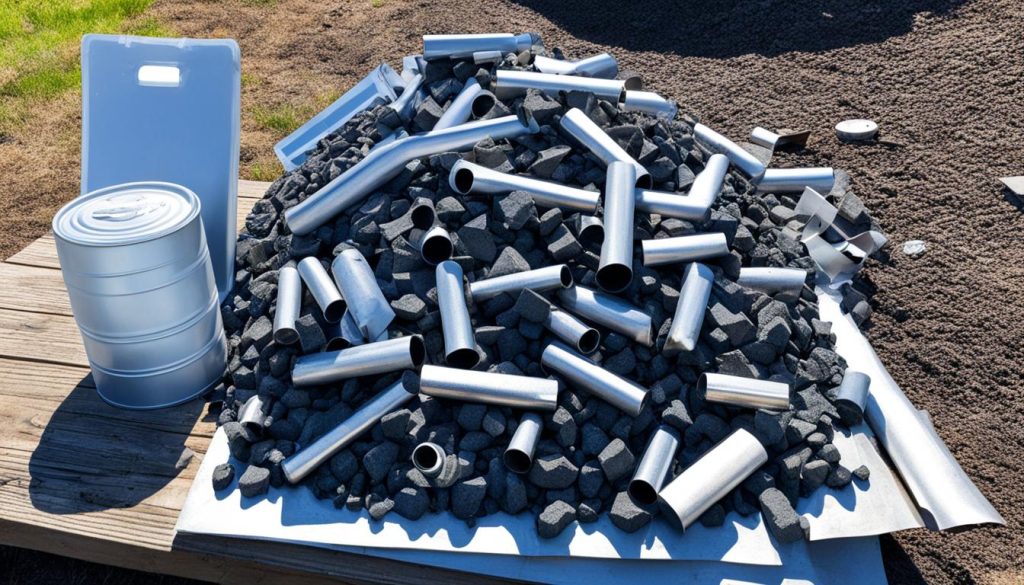
By gathering the necessary materials and sourcing them from trusted suppliers, you’re one step closer to creating a stunning gas fire pit that will transform your outdoor space into a cozy retreat.
Step-by-Step Installation Process
Now that you have your design plan and materials ready, it’s time to start the installation process. Follow our step-by-step guide to ensure a successful gas fire pit installation.
1. Prepare the Site
First, choose a suitable location for your gas fire pit. Clear any debris and level the ground to create a stable foundation. If necessary, consult local regulations or utility companies to ensure there are no underground cables or pipes in the area.
2. Lay the Foundation
Next, create a solid base for your fire pit. This can be done by digging a shallow hole and filling it with gravel or paver base material. Compact the base layer to ensure stability and proper drainage.
3. Install the Gas Line
Connect the gas line to your fire pit. Follow the manufacturer’s instructions to install the gas line correctly. It’s important to use proper fittings and ensure a tight connection to avoid any gas leaks.
4. Position the Burner
Place the gas burner in the center of the fire pit. Make sure it is level and secure. The burner should have a pan or tray to collect any debris and promote proper airflow.
5. Add Fire Media
Choose your desired fire media, such as fire glass or lava rocks, to enhance the appearance of your gas fire pit. Spread the fire media evenly over the burner, ensuring it covers the entire surface.
6. Test the Gas Line
Before lighting the fire pit, make sure to test the gas line for any leaks. Apply a mixture of soapy water to the gas connections and look for any bubbles. If you spot bubbles, there may be a leak, and you should tighten the connections or seek professional assistance.
7. Ignite the Fire Pit
Once the gas line is secure, it’s time to ignite your gas fire pit. Follow the manufacturer’s instructions to safely light the burner. Always ensure proper ventilation and keep a fire extinguisher nearby.
8. Add Finishing Touches
Now that your gas fire pit is up and running, add some finishing touches to make it your own. Consider adding seating options, such as outdoor chairs or benches, and surrounding the fire pit with landscape elements like plants, rocks, or decorative fencing.
“A well-installed gas fire pit can bring warmth and ambiance to any outdoor space. Take the time to carefully follow the installation process to ensure a safe and enjoyable experience for years to come.” – John Smith, DIY Enthusiast
| Step | Description |
|---|---|
| 1 | Prepare the Site |
| 2 | Lay the Foundation |
| 3 | Install the Gas Line |
| 4 | Position the Burner |
| 5 | Add Fire Media |
| 6 | Test the Gas Line |
| 7 | Ignite the Fire Pit |
| 8 | Add Finishing Touches |
Maintenance and Care Tips
Once your gas fire pit is up and running, it’s important to properly maintain it to ensure its longevity and performance. Regular maintenance tasks such as cleaning the burner, inspecting the gas lines, and troubleshooting common issues will help keep your gas fire pit in optimal condition for years to come.
Cleaning the Burner
To maintain the efficiency of your gas fire pit, it’s essential to regularly clean the burner. Use a soft brush or a cloth to remove any debris or residue that may have accumulated on the burner surface. Be careful not to damage the burner or disrupt the flame pattern while cleaning. Additionally, ensure the burner ports are clear and free from any blockage that could hinder the flow of gas.
Inspecting the Gas Lines
Regularly inspecting the gas lines is crucial for the safe operation of your gas fire pit. Look for any signs of wear, corrosion, or leaks in the gas lines. If you notice any issues, it’s important to address them immediately to prevent any potential hazards. Consult a professional if you are unsure about the condition of your gas lines or if you need assistance with repairs.
Troubleshooting Common Issues
While gas fire pits are generally reliable and low-maintenance, occasional issues may arise. Common issues include difficulty in igniting the fire, uneven flames, or unusual smells. Refer to the manufacturer’s instructions for troubleshooting tips specific to your gas fire pit model. If the problem persists or if you are unsure how to resolve it, it’s best to seek professional help to avoid any further complications.
Note: Remember to always follow the manufacturer’s guidelines for maintenance and care of your specific gas fire pit model. These general maintenance tips should serve as a helpful guide, but it’s important to consult the manufacturer’s instructions for model-specific details and recommendations.
Maintaining your gas fire pit properly will ensure its optimal performance and prolong its lifespan. Regular cleaning, inspecting the gas lines, and troubleshooting common issues will help you enjoy the warmth and ambiance of your gas fire pit for years to come.
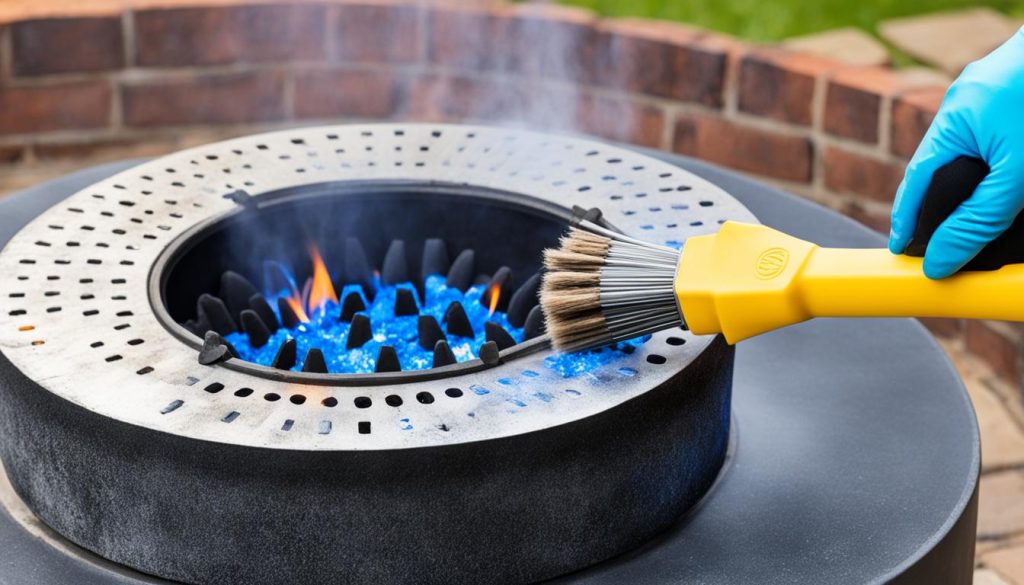
Enhancing Your Outdoor Oasis
A gas fire pit has the power to transform your outdoor space into a breathtaking oasis. With the right design and accessories, you can create a cozy and inviting atmosphere that will leave your guests in awe.
Here are some creative ways to enhance your outdoor oasis:
- Seating Options: Consider adding comfortable seating options around your gas fire pit. From lounge chairs to sectional sofas, there are plenty of choices to suit your style and space. Don’t forget to include cushions and pillows for added comfort.
- Landscaping Ideas: Incorporate landscaping elements to enhance the beauty of your outdoor oasis. Plant colorful flowers, install a water feature, or create a lush green wall. These natural accents will add depth and visual interest to your space.
- Decorative Elements: Add personality and charm to your outdoor oasis with decorative elements. Hang string lights overhead, place lanterns on nearby tables, and consider incorporating a pergola or canopy for shade. These touches will create a magical ambiance.
By combining these ideas and personalizing them to suit your taste, you can create an outdoor oasis that is both functional and visually stunning.
Remember, an outdoor oasis is a reflection of your style and personality. Be creative, experiment with different elements, and most importantly, have fun!
Conclusion
In conclusion, building a gas fire pit is a rewarding DIY project that can transform your backyard into a welcoming retreat. By following the steps outlined in this guide and prioritizing safety, you can create a stunning outdoor feature that will be enjoyed by family and friends for years to come.
Start by carefully planning the design of your gas fire pit, taking into consideration the materials needed and the construction process. Choose a location that enhances your outdoor space, taking into account factors such as wind conditions and local regulations.
Gathering the necessary materials is crucial for a successful build, so make sure you have all the components, such as the burner, gas supply system, and fire ring. Once you have everything ready, follow the step-by-step installation process carefully, ensuring proper site preparation and gas line connection.
Maintaining and caring for your gas fire pit is essential for its longevity. Regularly clean the burner, inspect the gas lines, and address any common issues that may arise. Finally, consider enhancing your outdoor oasis by incorporating comfortable seating options, landscaping elements, and other decorative touches.

